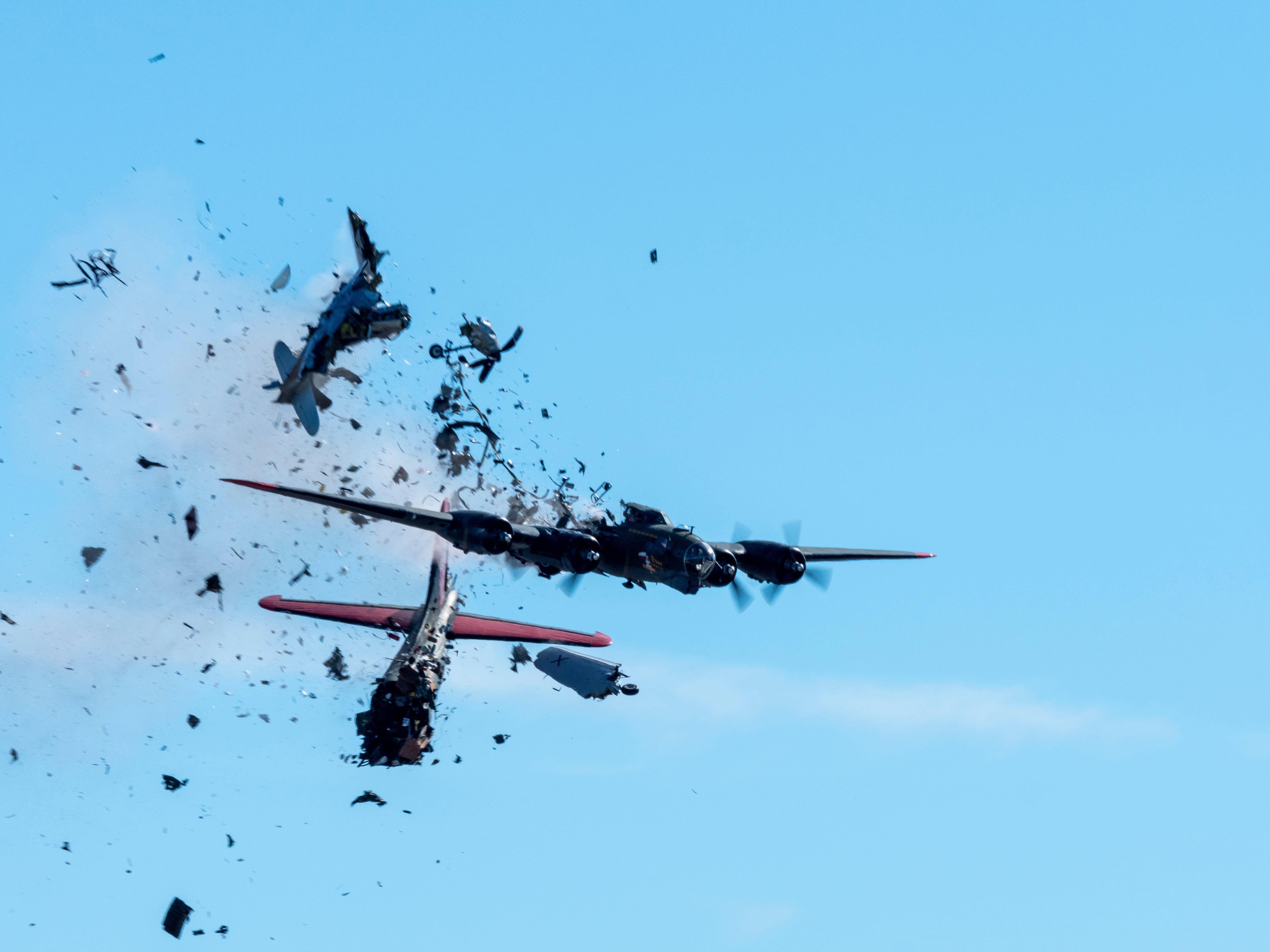Report: No altitude advice before Dallas air show crash
A preliminary report from federal officials on a deadly midair collision at a Dallas air show says no guidance was given on altitudes before a World War II-era fighter plane crashed into a bomber

Just before a midair collision that killed six at a Dallas air show, a group of historic fighter planes were told to fly ahead of a formation of bombers without any prior plan for coordinating altitude, according to a federal report released Wednesday. The report did not give a cause of the crash.
A Kingcobra fighter was banking left when it struck a B-17 bomber behind the left wing during the Nov. 12 air show featuring World War II-era planes, the National Transportation Safety Board said in its preliminary findings. All six people aboard the planes — the pilot of the fighter and the bomber's pilot, co-pilot and three crew members — died as both aircraft broke apart in flight, with the bomber catching fire and then exploding on impact.
There had been no coordination of altitudes in briefings prior to the flight or while the planes were in the air, the NTSB said. The report said that the Kingcobra was the third in a formation of three fighters and the B-17 was the lead of a five-ship bomber formation.
Eric Weiss, an NTSB spokesperson, said the agency is trying to determine the sequence of maneuvers that led to the crash. It is also examining whether such air shows normally have altitude deconfliction plans.
“Those are precisely the types of questions our investigators are asking,” Weiss said. “What was the process? What’s the correct process? And what happened?”
John Cox, a former airline captain with more than 50 years’ experience, was surprised that the NTSB found there wasn’t an altitude deconfliction brief before or during the flight. He said these take place in other air shows, but he’s not certain whether they’re standard for the Commemorative Air Force.
The NTSB said the fighter formation had been told by the air boss to proceed to a line that was 500 feet (152 meters) from where the audience was lined up at Dallas Executive Airport, while the bomber formation was told to fly 1,000 feet (304 meters) from the audience viewing area.
The NTSB said a navigation device on the bomber “contained position information relevant to the accident” but a device on the fighter didn’t record during the flight.
The Commemorative Air Force, which put on the show for Veterans Day, did not immediately respond Wednesday to a request for comment on the report. It previously identified the victims as: Terry Barker, Craig Hutain, Kevin “K5” Michels, Dan Ragan, Leonard “Len” Root and Curt Rowe.
All the men were volunteers who had gone through a strict process of logging hours and training flights and were vetted carefully, Hank Coates, the CEO of Commemorative Air Force said after the crash.
Cox said the planes were flown by experienced pilots and that it’s “virtually certain” the pilot of the smaller, more maneuverable fighter didn’t see the bomber. He said understanding how this happened will be a central challenge for investigators.
"What happened for two pilots of this skill level to end up in the same airspace at the same time?" said Cox, the founder of Safety Operating Systems, which helps smaller airlines and corporate flight services around the world with safety planning.
The air show incident came three years after the crash of a bomber in Connecticut that killed seven, and amid ongoing concern about the safety of shows involving older warplanes.
The B-17, a cornerstone of U.S. air power during World War II, is an immense four-engine bomber that was used in daylight raids against Germany. The Kingcobra, a U.S. fighter, was used mostly by Soviet forces during the war. Most B-17s were scrapped at the end of World War II and only a handful remain today, largely featured at museums and air shows, according to Boeing.
Bookmark popover
Removed from bookmarks